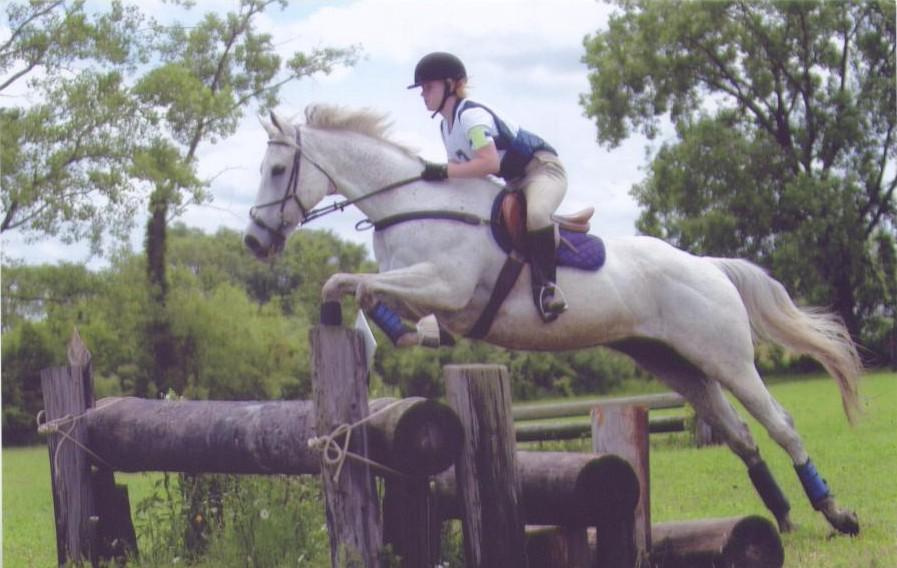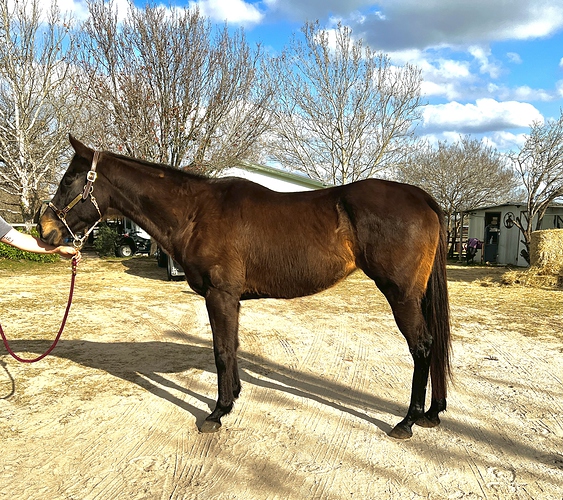Our best horse was a cribber --fabulous 3-Day horse who took the kiddo to the upper levels of 3-Day --he did his job for 20 years, 15 with her and the last few with a lower level rider. In his entire life, he never stopped at a fence and he must have jumped over 1000 –
He was a big time cribber. He would crib on anything --one time when kiddo was icing him, I was holding him (I was his groom for a time), he tried to crib on my shoulder. Another time I saw him in the pasture (all electric fence) cribbing on his own leg.
We used, and I still have, his cribbing collar --a plain leather strap, lined with sheepskin that went right behind his ears and was put on really, really tight. With it on, he never cribbed. We saved his teeth and kept weight on him --lanky OTTB.
He wore the same strap his entire life, repaired many times. We tried to have it copied one time, but the original worked better. It had the shape of him.
He came to me at 25 for retirement (I have huge pastures and run-in sheds) for the remainder of his life. He lived to be 29. People who say “stress causes cribbing,” I don’t agree. That horse had a stress free life with every horsey whim met --20 acre lush pasture, one calm buddy, regular feed/hay/water, 13x13 stall, daily brushing, blankets (OMG did that horse have blankets!) and no work at all. And still he cribbed.
Since he’d been a great horse for us, when he came to me for full retirement, I took off the cribbing collar and let him crib to his hearts contend. Eventually he lost all his front teeth and my wooden fence posts suffered --that was his favorite place to crib --hook on to those 6x6 posts and have at it.
Cribbing didn’t kill him --the years of jumping really big fences caused all four legs to bow (at different times). Finally, when he stopped being able to walk to the barn at night, we gave him one great summer, and in the fall, sent him to the start gate for the last time. He’s jumping really big clouds now. He is still on YouTube --cross country is the best but like watching it all.




